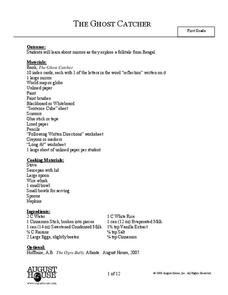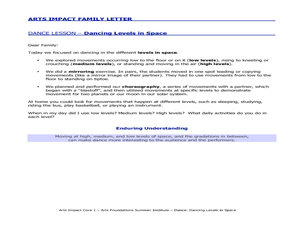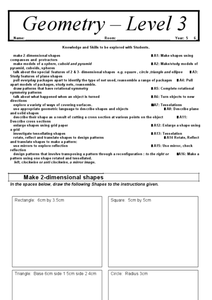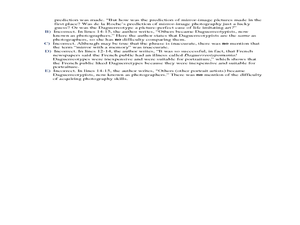ResourcesWeb & Docs
MediaVideo & Audio
CollectionsLessons & Topics
AI Teacher ToolsInstruction & Ideas
newFilter
15 results:
mirrors reflectionsClear All
K12 Reader
What Causes Reflections?
Your kids probably use mirrors every day, but do they know how they work? A reading passage about reflection and reflective objects can address both physical science and reading comprehension. Kids read the paragraphs and use context...
Curated OER
Backwards Writing: Reflections and Symmetry
Why is "ambulance" written backwards on emergency vehicles? Young geometers apply principles of symmetry to translate words written backwards. See if your school or district subscribes to Jobland, where you can view a clip that explains...
Curated OER
Physical Science Activities: Letters in a Mirror
Investigate mirror images with alphabet letters! In order to experiment with mirror images, distortion, and reflection, class members use small mirrors and place them over and near the alphabet letters on the worksheet. Individuals or...
Curated OER
Year 6 Booster shape pg 1
In this reflection worksheet, students reflect the shapes in the mirror lines and draw them on the other side. They complete 2 drawings. The answers are on the last page.
Core Knowledge Foundation
Light and Sound Tell It Again!™ Read-Aloud Anthology
Light and sound are the running themes of a read-aloud anthology. Over three weeks, third graders listen to discuss readings in preparation for completing extension activities. Pupils work through the writing process to compose an...
August House
The Ghost Catcher
Delve into a Bengali folktale with a series of reading comprehension activities. Before kids read The Ghost Catcher, they discuss the concept of reflections and mirrors. They then answer comprehension questions about the characters and...
Curated OER
Kaleidoscope
Students explore energy by creating a light project in class. In this kaleidoscope lesson, students discuss the properties of light and how mirrors can reflect the energy in different directions. Students view a diagram of light...
Curated OER
Dancing Levels in Space
Students practice mirroring human moves by performing a dance in class. In this physical education lesson, students utilize different spaces around them to perform a dance expressing their full motion. Students cooperate in...
Curated OER
Pop Shop 2 - Etching and Woodcutting
Students study printmaking, using mirror images, and positive and negative images. They examine how and why print images and text are used. They use a linoleum blocks to make prints.
Curated OER
Geometry Level 3
What a wonderful resource! Learners create two-dimensional shapes according to the instructions stated, use the squares to make a triangular prism, a cube, and a pyramid, and identify features of plane shapes, among a myriad of other...
Curated OER
Draw the Other Half
How can you make the two halves symetric? Scholars use the concept of symmetry to complete five images which are only half-drawn. The fun part about this exercise is that they aren't copying geometric shapes. There is a face, sun, kite,...
Curated OER
Transcendentalism and Romanticism in American Literature
How do transcendentalists believe you must learn about the world? Use this PowerPoint to define transcendentalism and explain reason and intuition. Social, political, and philosophical influences of this time are introduced, and a few...
Curated OER
Invertebrates
Students examine invertebrates. In this animal classification lesson plan, students discuss invertebrates and bilateral symmetry. They discuss the importance of horse shoe crabs in medical science.
Curated OER
Intermediate Critical Reading - Photography
Inform your class about the origins of photography with this short passage and accompanying questions. After reading a short informational text, leaners answer 3 questions about the content of the text. This resource could be used in a...
Curated OER
Comparing and Contrasting
Students practice compare and contrast skills. For this science and language development lesson, students complete a T chart generating traits of a snail and a clam. Students complete a related worksheet.
















